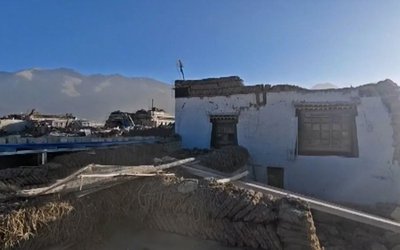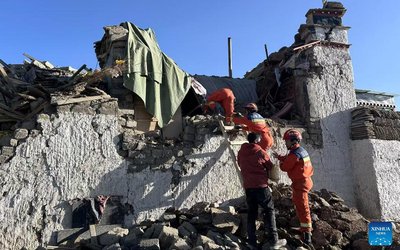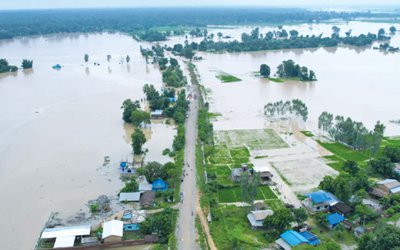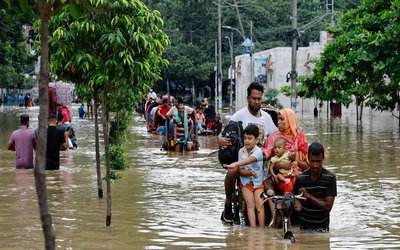
Building embankments on rivers passes for flood protection. But there is increasing evidence that they have made little difference to floods which have increased in fury and last longer
Millions of people have been displaced and hundreds killed by the floods and rains in Assam, Bihar and other parts of the country
Millions of people have been displaced and hundreds killed by the floods and rains in Assam, Bihar and other parts of the country
British rulers in colonial times did try to build embankments by way of flood protection. These embankments were essentially artificial mud walls constructed along the rivers to separate inhabited areas from spills of the river.
They felt that if spilling of rivers could be checked, they could tax ‘natives’ for providing flood control. Once flooding was checked, protected areas would need irrigation and they could make more money by providing for irrigation.
But embanking rivers has been a controversial technology and was known not to have worked well in China and the USA. They found it hard to maintain the embankments and any breach in them would frequently offset benefits accrued over past many years in one go.
We also suffered huge losses after embanking rivers in Odisha and finally with the Damodar, we learnt the bitter lesson that when a heavily silt laden river is embanked, the sediment gets trapped within the embankments leading to successive rise of the riverbed necessitating raising of the embankments.
There is, however, a practical limit to which the embankments can be raised and maintained. The river water seeps through these embankments and causes water logging in the countryside. The countryside is deprived of the nutritious silt that it would have otherwise got if the river was allowed to flow freely. The embankments also prevent the flow of the tributaries from getting into the main river and sluice gates have to be constructed to allow the tributaries’ water to flow into the main river.
However, these sluice gates cannot be opened during the rainy season because there is a possibility of the main river water entering the tributary and flooding newer areas hitherto free from flooding.
The tributaries, on their own, may start flowing parallel to the main river outside, flooding new areas. It can then be suggested that the tributaries also be embanked, trapping the rainwater between the embankments of the main river and the tributary. The only route for this water to escape is through evaporation or seeping into the ground. Or else, it may have to be pumped into either of the streams.
Should any of the embankments breach, then it invariably causes a deluge. No embankment can be guaranteed against breaching, not even in the USA or China. Moreover, the cost of relief and rehabilitation would offset all the benefits that have accrued over the years in the event of a single major breach.
Once the British rulers realised the pitfalls, they avoided building more and newer embankments till they remained in India. But should anybody (princely states and zamindars) build an embankment with their own money and at their own peril, they did not interfere either.
Seeking flood protection through embankments amounts to falling into a trap from which it is very difficult to escape.
But engineers, at least some of them, believe that if a given amount of water passes through a reduced area, its velocity increases and so does its capacity to erode. When embankments are built along any river, they say, the velocity of flow increases, and river water can erode the banks and dredge the bottom of the river thereby increasing the waterway of the river. More waterways would mean a greater capacity to carry discharge and hence the floods would be reduced.
There is, however, no factual evidence from India, China or the USA to support this argument. The debate whether embankments lead to increased flooding or decrease them, is yet to be resolved amongst the engineers.
They, however, prompt politicians with their arguments depending upon the social or political pressure brought on them as both the arguments in favour or against the embankments are apparently equally sound and the benefit of this inconclusive debate goes to the politicians who take the decisions on embanking rivers, or otherwise, and the engineers only play a subservient role.
The government of India encouraged a massive embankment programme of rivers in early 1950s against a debate that favoured leaving the rivers to their own devices.
In Odisha, a committee was appointed in 1928 to study the impact of embankments and it concluded by saying, “…the problem in Odisha is not how to prevent floods, but how to pass them as quickly as possible to the sea. And the solution lies in removing all obstacles, which militate against this result.”
“Unfortunately, the fact that the delta is inhabited prevents this policy from being perused in its entirety. The utmost that can be done is to follow it steadfastly in so far as it does not displace or disturb too many people and inhabited areas. But to continue with the status quo is merely to pile up a debt which will have to be paid in distress and calamity, at the end,” it went on to say.
Capt. Hall, the then Chief Engineer of Bihar (1937) stated at a seminar held in Patna in 1937 that the way bundhs were being constructed or even if the status quo were maintained, ‘… we are storing disaster for the future though we may not be here ourselves to witness the climax.’
Capt. Hall also said that Americans had controlled the river in their entire length and they had unlimited resources. The origin of the Kosi is in Nepal and Bihar did not have unlimited resources for controlling floods.
There has always been a strong relationship between available resources and practical engineering solutions. But this never meant that the cheapest solution was the best option, usually far from that.
He cautioned that going beyond one’s means to take up any project was not desirable. All these cautions were thrown to wind though and opposition to embankments were branded as statements given by people with a colonial mindset.
Vijay Kumar Choudhary, former Water Resources minister of Bihar, said at a meeting of the Bihar State Disaster Management Authority in Patna, “Many people believe that problems arise after embanking the rivers. I also feel that even if an embankment is extended by an inch, the headache of the Irrigation Department also extends that much more. The first responsibility of the department then becomes to save the embankment at all costs and for nearly three months all the engineers are on their toes to prevent the breach.”
No wonder, embankment protection has become a synonym for flood control.
(The author is a former IIT-ian, author and activist who has been arguing against embankments for flood protection)
Kosi’s Barahkshetra Dam hanging in proposal stage since 1937
Though the issue is pending for decades but people feel it will be taken up next year!
This dam on the Kosi was first proposed in 1937 but continues to be in the proposal stage. A team of Indian and Nepali engineers is preparing the Detailed Project report (DPR) since 2004 but the report is still not ready. Every time there is flood in Bihar, the government announces that negotiations are on with Nepal and the dam would solve the problem once and for all.
This year was no exception. The Minister in charge of the department of Disaster Management declared the dam to be the final and lasting solution. He also said it was the duty of the Centre to take the necessary steps.
People have been led to believe that after the construction of this dam all the flood problem of North Bihar will be solved.
People do not ask what would happen to floods in river basins other than the Kosi or how the dam on Kosi would solve the problem of flood throughout the state. Nobody questions whether the issue of earthquakes that were hinted by Anugrah Narayan Singh in 1954 have been adequately addressed. Nor do people ask whether 60,000 Nepali people will agree to be displaced because of the dam, which they believe would benefit mostly India. What would happen to the rights of the indigenous people who are living in the reservoir area?
Though the issue is pending for decades but people feel it will be taken up next year!
Elderly people recall that in good old days, floodwater would recede quickly enough. But in 2007, it had stayed for more than two and a half months at many places in the districts of Khagaria, Samastipur, Muzaffarpur, Saharsa and Supaul. The water remained there because it did not find an outlet to move further.
Common sense suggests that floodwater was looking for openings to pass through those places. But the government plugged all the breaches and strengthened most embankments. That programme continues unabated.
Even if that was the immediate need, it was never followed up by a drainage programme. Raising and strengthening of embankments cannot solve problems of rainfall, river discharge, sediments in the river water, rise of the river-bed and water logging. This is an old story and is going to get repeated this year too. We have had several Flood Commissions in the past at the national level as well as at the state level. Can’t we think of a Drainage Commission that will look into the problem of drainage of rainwater in the country?
The word ‘flood’ at one time conjured visions of rural areas with villagers moving to safer places along with their belongings and cattle. But of late urban areas are also getting affected by floods.
Relief work is not flood control. Relief merely makes flood victims dependent on the establishment and lose all the initiatives that the flood victims can take to protect themselves. Also, the flood policy of the State and the Centre needs to be reviewed.
Why should the flood prone area of the country get doubled during the plan period at the national level and in case of Bihar, it has increased nearly three folds? Is the investment in flood control sector causing more harm than good?
Courtesy: National Herald















